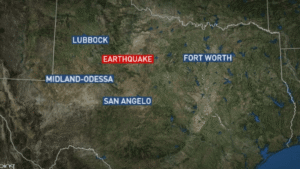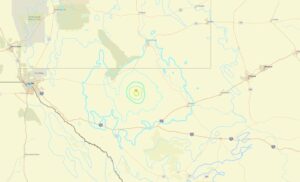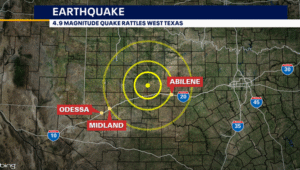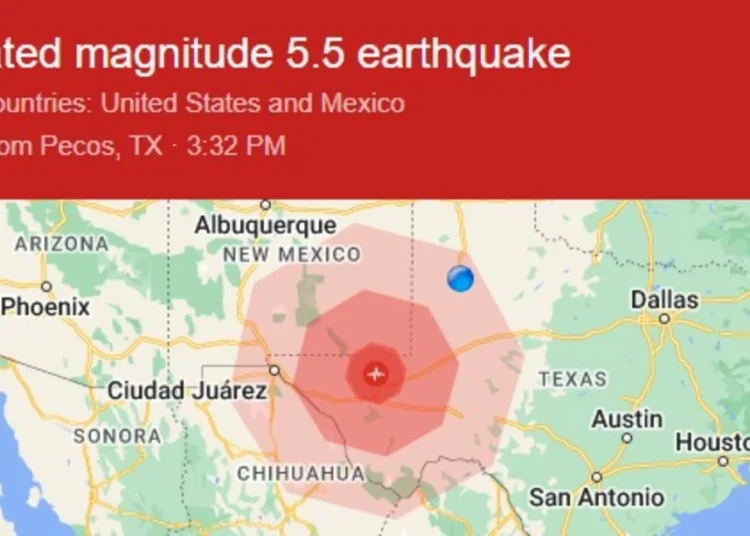As of now, reports are emerging about a recent earthquake that has occurred in Lubbock, Texas—a region not commonly associated with seismic activity. While details are still developing, residents across the area have shared experiences of tremors felt in homes, offices, and schools. This event has taken both experts and locals by surprise, prompting questions about the cause, potential damages, and what it might mean for the future of this West Texas community.
Initial Reports and Impact
According to preliminary data from the United States Geological Survey (USGS), the earthquake struck earlier today with an estimated magnitude between 3.8 and 4.5. The exact epicenter appears to be located just outside the city limits of Lubbock, in a sparsely populated area. The quake occurred at a relatively shallow depth, which may explain why so many residents felt the shaking even though the magnitude isn’t considered high on a global scale.

Social media quickly lit up with posts from residents describing the ground shaking, windows rattling, and in some cases, minor items falling off shelves. No significant damage or injuries have been reported so far, but emergency services have been dispatched to inspect buildings, infrastructure, and utilities for possible issues.
A Rare Occurrence in Lubbock
Lubbock is not known for seismic activity. Located on the Southern High Plains, the region typically experiences a very low number of earthquakes annually, and when they do occur, they are usually minor and often go unnoticed. This has raised questions about what might have caused the earthquake and whether it could be a sign of more to come.
Geologists speculate that this event may be linked to a fault line previously considered inactive or could be the result of induced seismicity—earthquakes triggered by human activity. West Texas has seen an uptick in minor earthquakes in recent years, often correlated with oil and gas operations, particularly wastewater injection into deep underground wells. However, Lubbock has not been a hotspot for such activity, making this earthquake even more unusual.

Public Reaction and Emergency Response
Local authorities acted quickly to reassure the public. The Lubbock Police Department, Fire Department, and Office of Emergency Management all issued statements advising residents to remain calm and report any structural damage or gas leaks. School districts temporarily halted activities to inspect buildings, while Lubbock Preston Smith International Airport conducted safety checks on runways and facilities.
Meanwhile, residents shared their reactions online—some expressing concern, others astonishment. For many, this was their first time experiencing an earthquake, creating a mix of curiosity and anxiety. Several local businesses reported brief evacuations as a precaution, and hospitals prepared for possible influxes, though none have been reported so far.
Scientific and Academic Perspectives
Texas Tech University, located in Lubbock, is expected to play a significant role in analyzing the event. The university’s geosciences department has already mobilized to gather data and potentially install temporary seismographs in the area. Experts will be looking to determine whether this was an isolated incident or part of a broader geological trend.
Dr. Angela Ruiz, a geophysics professor at Texas Tech, stated in a local news interview, “While earthquakes of this magnitude are not highly destructive, their rarity in this region makes them important to study. We need to understand what caused it and assess whether there could be more activity in the near future.”
Looking Ahead

For now, life in Lubbock is returning to normal. However, this unexpected earthquake serves as a reminder that seismic events, while rare in some regions, are possible nearly anywhere. Authorities are encouraging residents to be aware of basic earthquake safety measures, such as “Drop, Cover, and Hold On,” especially if aftershocks occur.
The city is also reviewing its emergency preparedness plans and may increase efforts to educate the public about earthquake response protocols, even if future events remain unlikely. Utility companies have begun inspections to ensure the integrity of gas and water lines, and structural engineers are being consulted to evaluate public buildings.
Conclusion
Today’s earthquake in Lubbock, Texas, has drawn attention not only for its rarity but also for the community’s swift and measured response. While the event was not catastrophic, it has highlighted the importance of readiness and the need for ongoing scientific study. As experts work to understand what happened beneath the surface of this quiet Texas city, residents are left with a shared story—and a little more awareness of the shifting ground below.













